We may earn revenue from the products available on this page and participate in affiliate programs. Learn More ›
If your driveway isn’t draining properly, it can cause some serious problems. Audie Brower, the owner of JASB Roofing and Exterior Remodeling, explains one such example. He says, “Poor driveway drainage can lead to water pooling, which not only creates a slip hazard but can also undermine the driveway’s foundation, leading to cracks and potholes.” Fortunately, there are several possible solutions to improve drainage and protect one’s property. Read on to learn more about these potential fixes to decide which will be the best fit for your specific situation.
Problems Caused by Poor Driveway Drainage
The prospect of fixing a driveway that isn’t draining properly may seem like a daunting task. However, the alternative is not a viable solution either. If you don’t address driveway drainage issues, it can lead to some serious problems. A few of these include:
- Wearing down the driveway more quickly: If drainage issues aren’t addressed, then the driveway is going to wear down more quickly. The asphalt or concrete will absorb more water and break down rapidly, leading to cracks and erosion. Excess amounts of water are also likely to discolor the materials, leaving the driveway looking worse for the wear.
- Soil erosion: When water collects on the surface around the driveway, it can wash the soil away. This can threaten a home’s landscaping and even make the driveway more likely to crack or sink down.
- Threats to the home’s foundation: As water is eroding soil along the driveway, it is also making its way toward the foundation of the home. If allowed to continue on this course and pool around the house, it has the potential to crack or otherwise damage the foundation.
- Moisture issues inside the home: If water reaches the foundation of the home, it could even penetrate the structure and lead to moisture issues in the basement or lower levels. With excess moisture, mold and mildew are more likely to grow, causing a potential health risk for those living in the home.
The 7 Best Driveway Drainage Solutions
The ideal drainage solution will be different for each driveway. While driveway drain installation may be necessary in some cases, regrading, using permeable pavers, or other approaches may be better for others. Keep in mind that the cost to repair a driveway will vary based on the scope of the problem and the recommended remedy.
Channel Drain
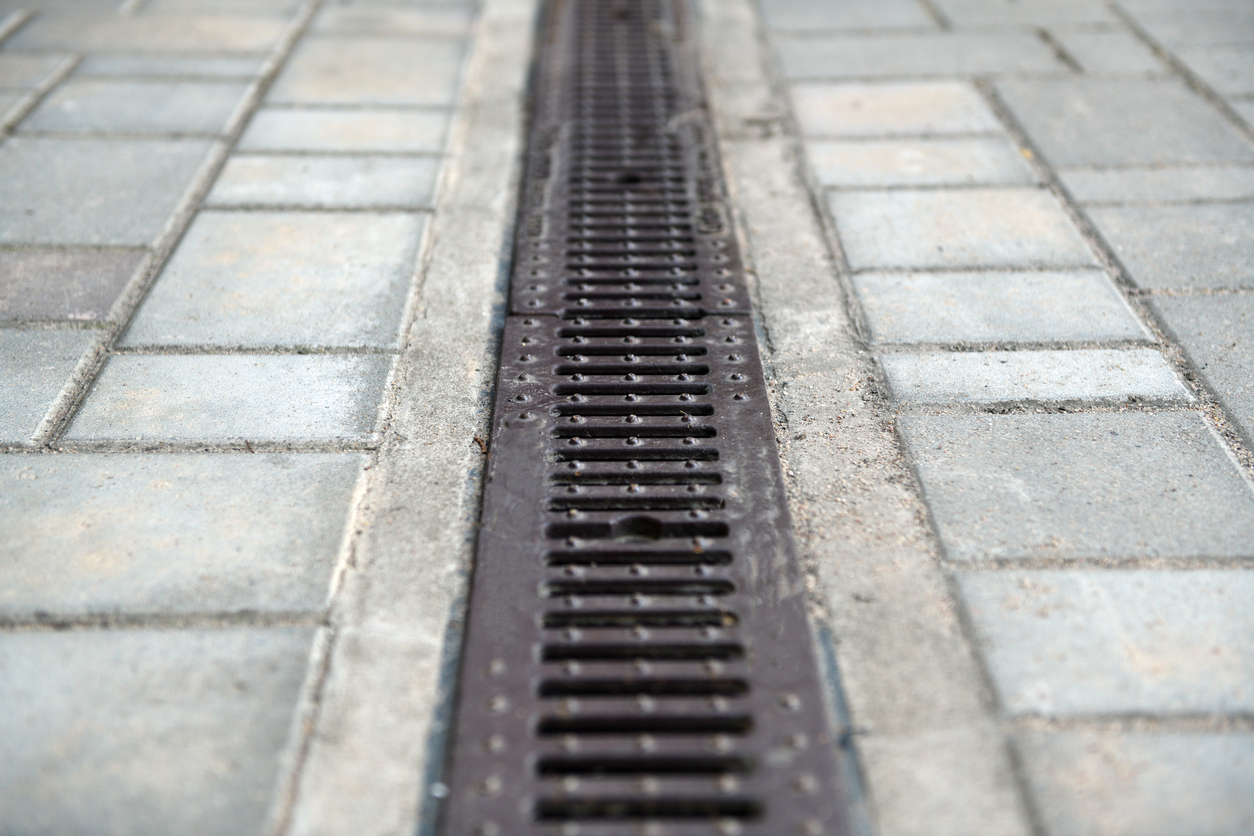
“One effective solution for driveway drainage is the installation of a channel drain,” explains Brower. “Channel drains, being linear, are capable of capturing water over a wide area and are ideally suited for situations where surface water collects rapidly.” The driveway drain grate is installed into the concrete or asphalt itself and routes, or channels, water to a more desirable location.
Depending on the situation, these drainage grates for driveways may reroute the water to a sewer, pipe, or another drainage system. Similarly, a sidewalk drainage channel can be installed to address pooling water around walkways.
Best For: Driveways that slope toward a garage, the foundation of a house, or landscaping features.
Catch Basin or Dry Well
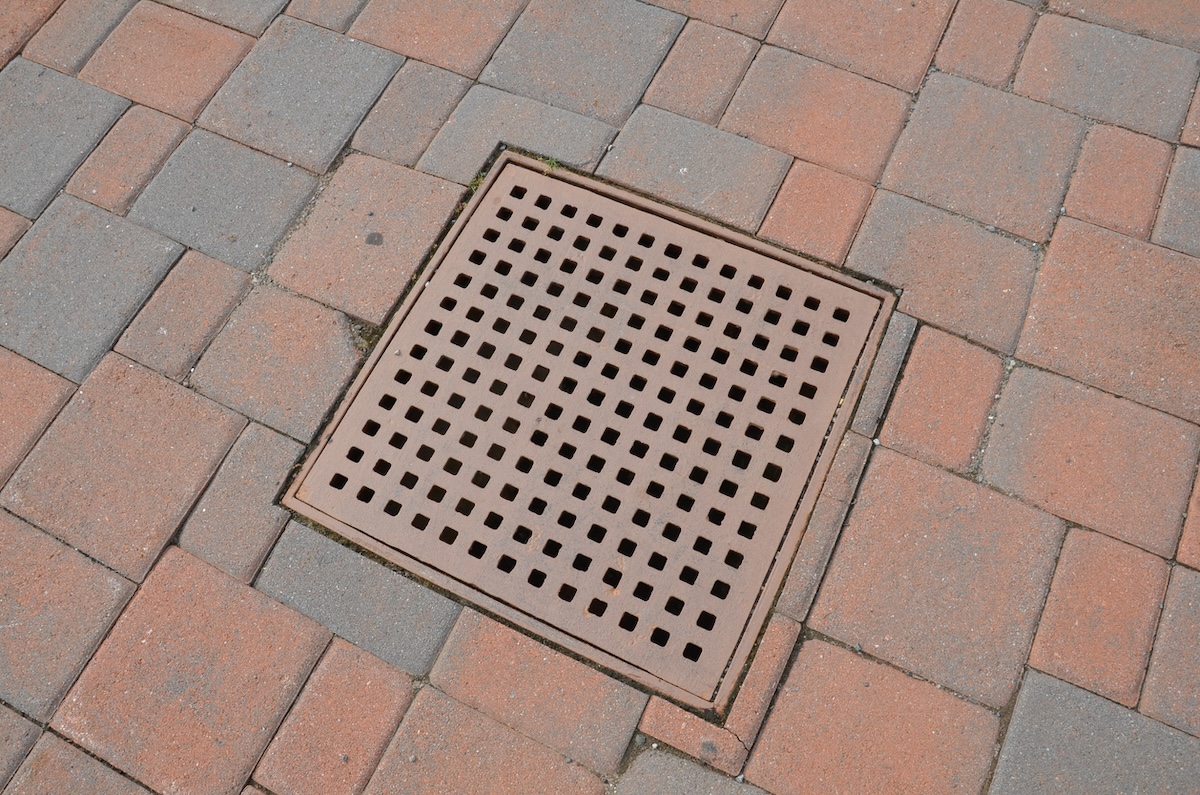
Catch basins and dry wells are two other potential driveway drainage solutions to consider. Catch basins typically consist of an in-ground box (basin) beneath a grate. The basin collects water and reroutes it away from the area.
Dry wells work similarly. However, there is no basin inserted in the ground. Instead, the well is simply a permeable hole that is dug. According to Brower, both of these options are “best suited for properties with space to accommodate a well or basin that collects and gradually disperses water into the surrounding soil, thus preventing saturation.” Brower also notes that a catch basin or a dry well could be a suitable solution “in areas where it’s not possible to connect to the municipal stormwater system.”
Best For: Larger properties that are unable to connect to the city’s stormwater system.
French Drain
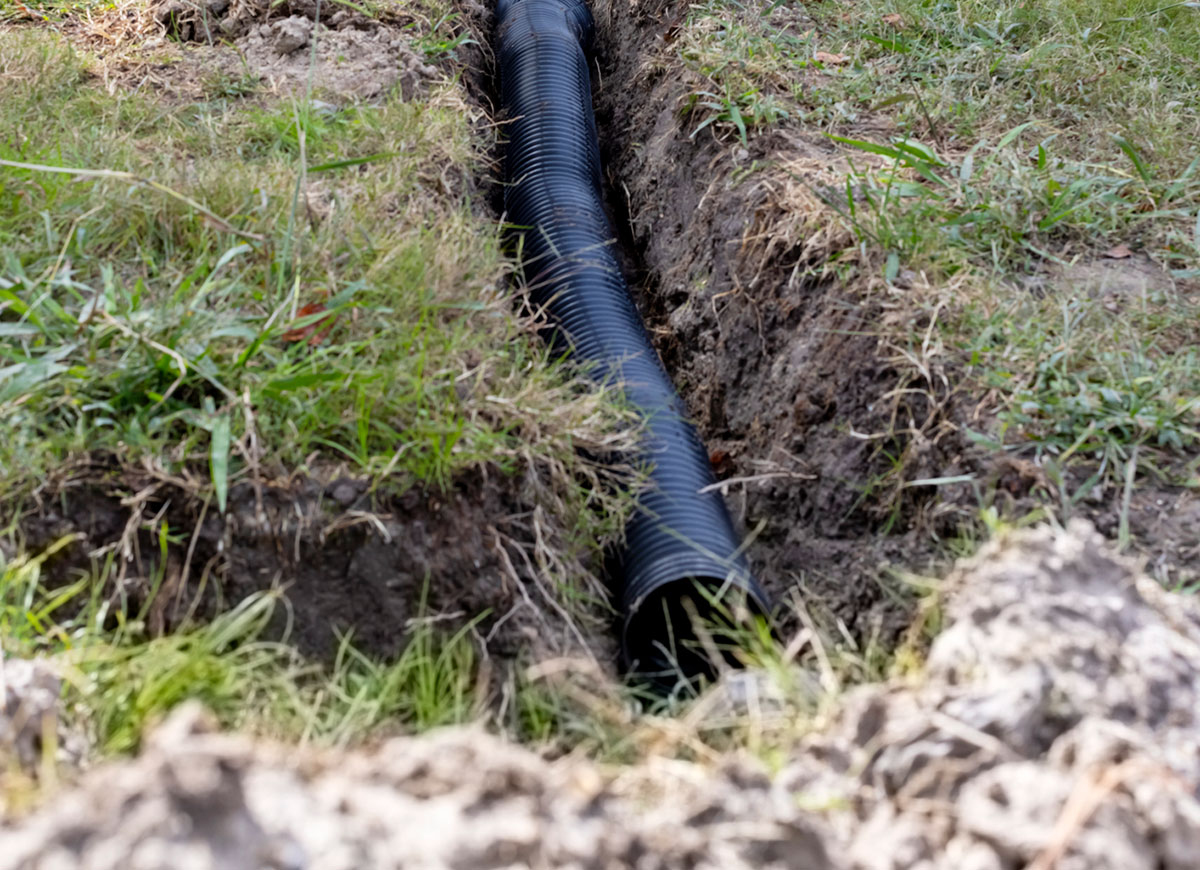
A French drain allows water to slowly seep into the ground, preventing it from pooling around the driveway, foundation, or other landscaping features. This driveway drain is made by digging a trench in the affected area. A perforated pipe is placed in the trench, and then it is filled with gravel. Water first passes through the permeable gravel and then flows through the perforated pipe into the ground.
French drains tend to be the most effective when dealing with subsurface water; they might not be the ideal choice if a driveway area is frequently plagued by standing water.
Best For: Homeowners dealing with higher levels of subsurface water, not standing water.
Dry Creek Bed or Swale
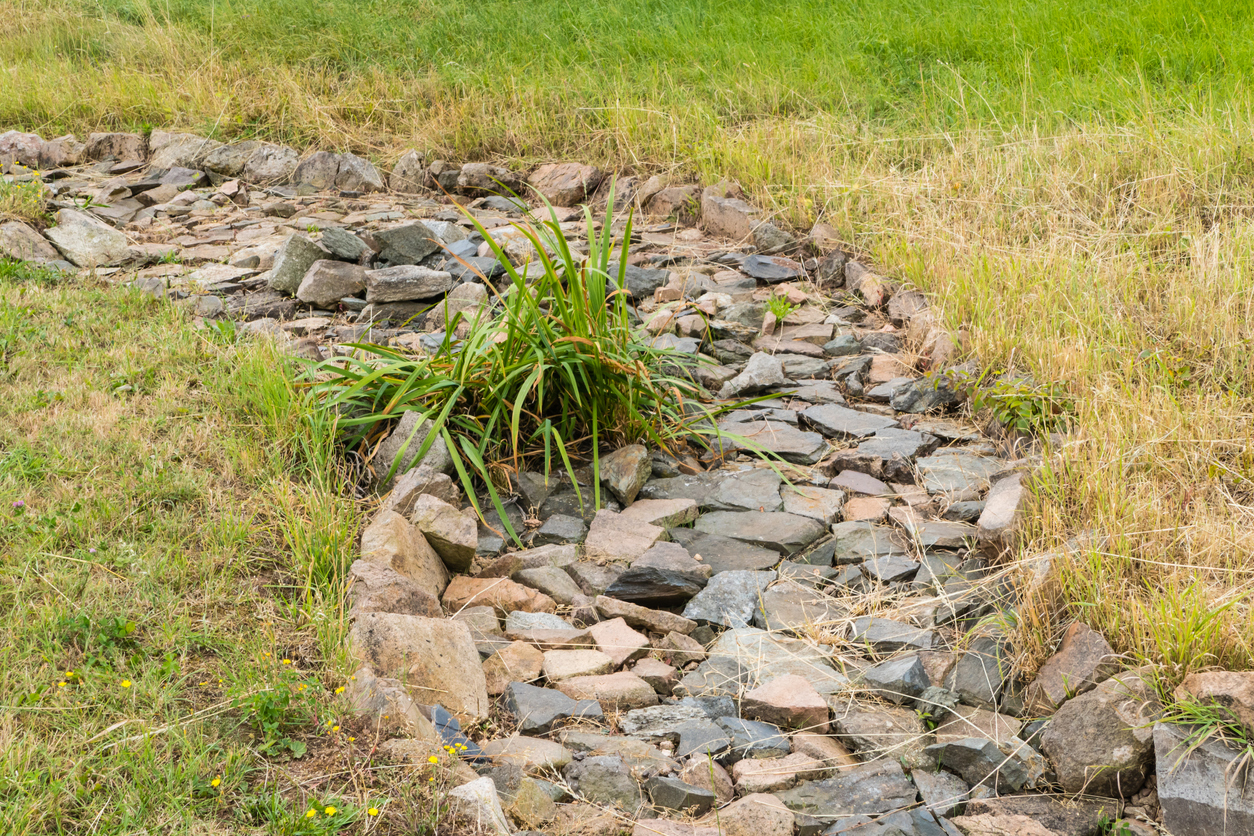
Swales, or dry creek beds, work to direct water away from a driveway, structure, or other items. They are made by digging out a slight U-shaped trench around the area where water is pooling. The sloping shape of the depression causes water to collect in it, rather than around the driveway. The water then flows through the trench, away from the driveway and the home’s foundation.
When the trench is dug, it is generally filled with rocks to aid with drainage, along with a filtering fabric that helps protect the area against erosion. Swales are often found at the end of a driveway, between the sidewalk and the street. After the trench is dug, grass can be planted, making the swale less noticeable. If you do decide to use this drainage solution, take care to avoid parking a vehicle in the area, as it can compact the dry creek bed and make it less effective.
Best For: Addressing less severe drainage issues along a driveway with a sufficient slope.
Permeable Pavers
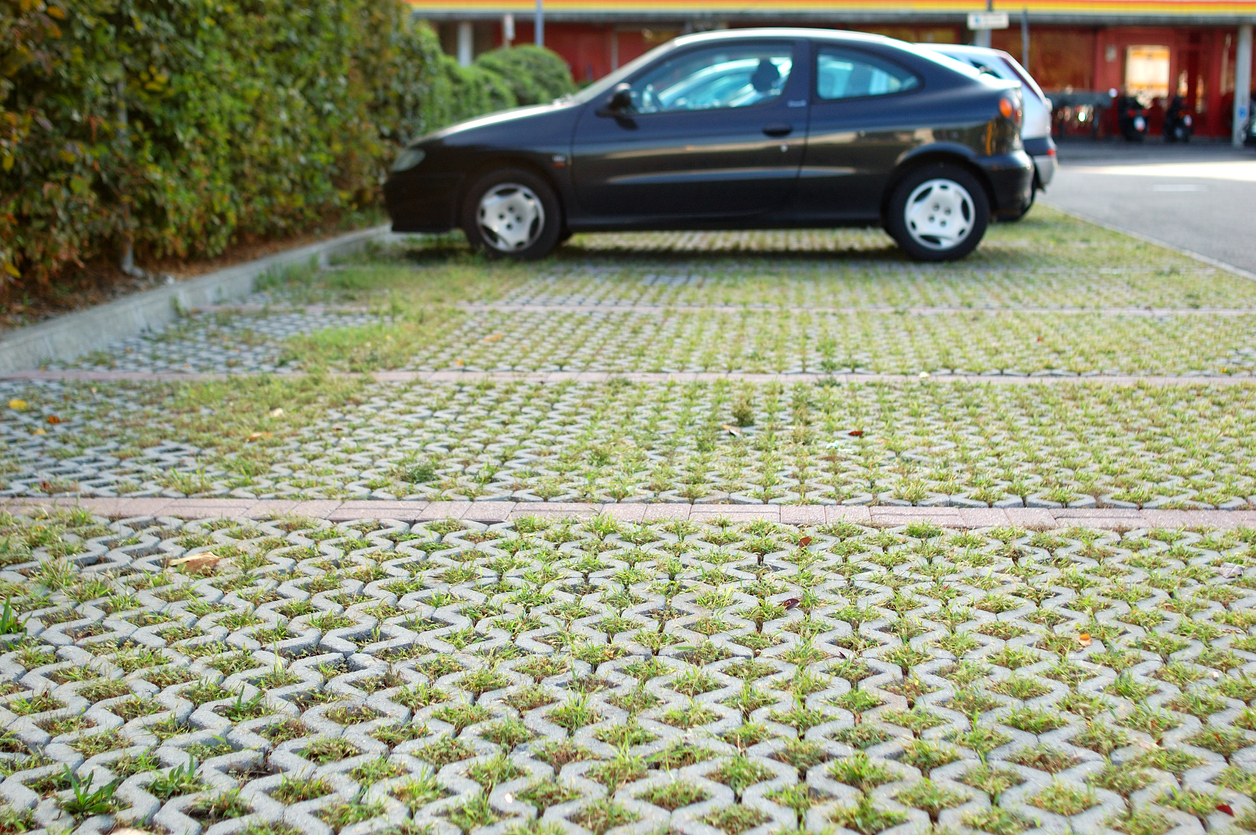
For those facing serious drainage issues, then it may be time to switch to a completely new driveway type altogether. When looking for the best driveway paving companies, consider hiring one that will install permeable pavers. Unlike nonporous materials that allow water to pool at the surface, permeable materials let the water pass through to the ground beneath them.
Permeable pavers can also support replenishing reserves of groundwater, as well as filtering out potentially harmful pollutants and keeping them out of groundwater and waterways. A grass driveway, which consists of pavers laid out in a grid design to create a secure structure with grass growing between them, is one example of this drainage solution.
Best For: Driveways with major drainage and water pooling problems.
Culvert
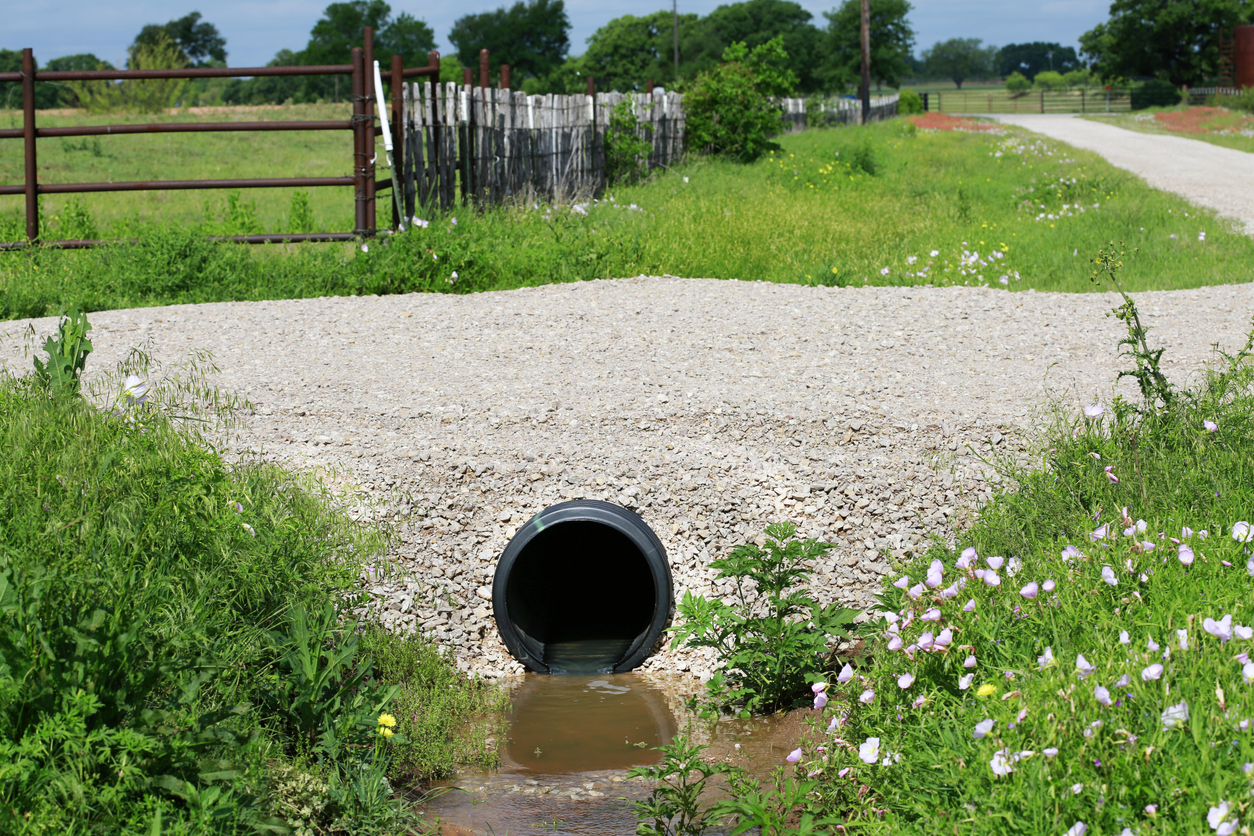
Have you ever seen a driveway with a wide pipe running under it? If so, then you know what a culvert looks like. This driveway drainage system consists of a large pipe that is used to pull water under a driveway. They are often used when the driveway crosses a creek, swale, or other water feature.
Culverts run under a driveway, so it is necessary to dig up part of the existing driveway to have one installed. It’s best to work with a professional to determine the ideal type and size based on the drainage needs of the property.
Best For: Driveways that cross over a swale, trench, or creek.
Regrade Driveway
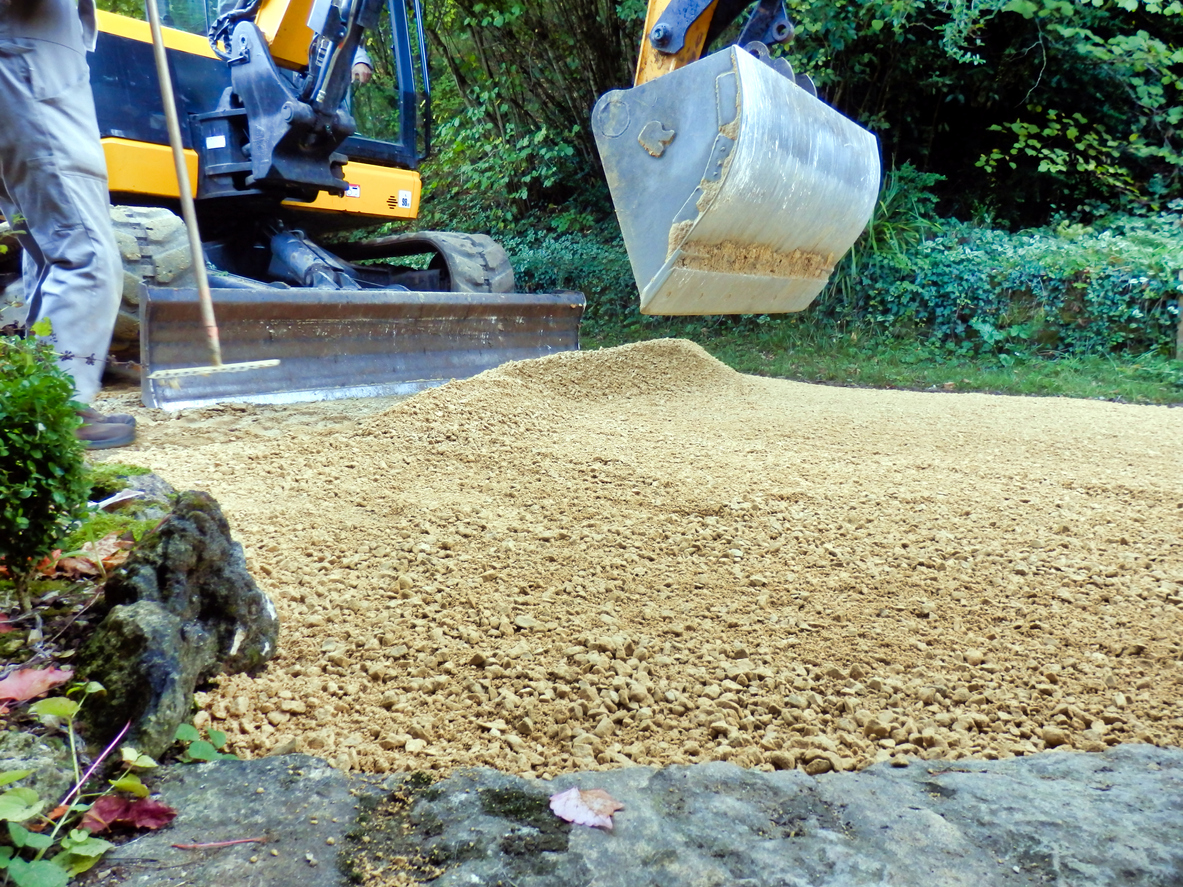
“For driveways with minor slope issues, regrading may be the simplest solution,” says Brower. “By adjusting the pitch of the driveway, water can be directed away from the home and toward an appropriate drainage area. This method is less about installing new systems and more about correcting the existing layout to improve drainage efficiency.”
Homeowners who have a gravel driveway might be able to attempt this task on their own by moving the old gravel off, increasing the slope, and returning the gravel into place. However, those with a paved driveway will want to hire a professional.
Best For: Driveways that are uneven or need a slight slope adjustment.
Final Thoughts
From drains for driveways to regrading or creating a swale, there are several possible solutions to help address drainage issues. As Brower points out, “In each case, the solution depends largely on the specific layout and geography of your property as well as local climate conditions.” Consider consulting with a qualified professional to help choose the right approach to maintain a gravel driveway or prevent pooling and standing water around one that is paved.


